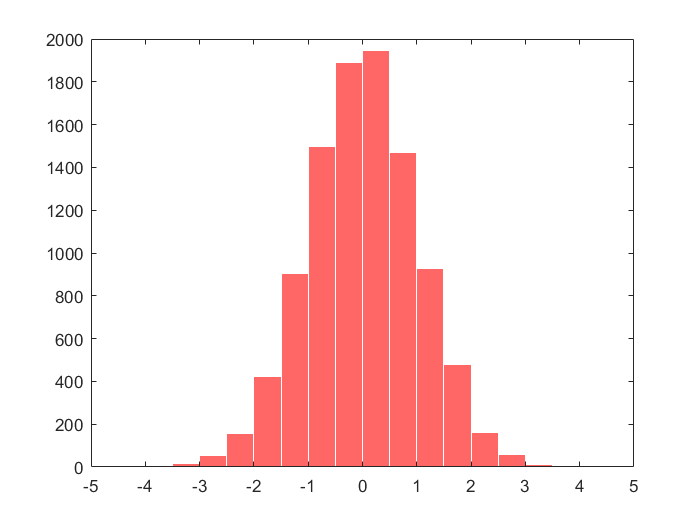Vectors: Vector calculus in MATLAB
 Creation of vectors
Creation of vectors
A vector in MATLAB is a 1-dimensional array of numbers. You can work both with row vectors and column vectors.
Row and column vectors A row vector is created by putting the numbers in a list and separating them with a space or comma.
You get a column vector when you separate the components with semicolons.
Below are, behind the prompts in the MATLAB command window, commands to create a vector of any type. The final command illustrates that a transposed vector is obtained by means of an apostrophe.
>> rv = [4 5 6] % row vector
rv =
4 5 6
>> cv = [4; 5; 6] % column vector
cv =
4
5
6
>> cv' % transposed vector
ans =
4 5 6Dimension and norm With the length command you can determine the dimension of a vector. Do not confuse this with what is understood in mathematics by the (Euclidean) length of a vector, namely the norm. The norm can be calculated numerically in MATLAB with the command norm and there are options to calculate variations.
>> dimension = length(rv)
dimension =
3
>> euclideanlength = norm(rv) % Euclidean length
lengte =
8.7750
>> norm1 = norm(rv,1) % sum of absolute values of components
norm1 =
15
>> infnorm = norm(rv,inf) % maximum of absolute values of components
infnorm =
6Special constructions There are also special commands to create specific vectors; we show a few commonly used constructions.
>> v1 = 5:10 % from 5 up to and including 10
v1 =
5 6 7 8 9 10
>> v2 = 10:-2:5 % from 10 down to and including 5 with steps of -2
v2 =
10 8 6
>> v3 = linspace(0,1,6) % equidistant distribution of 6 points in [0,1]
v3 =
0 0.2000 0.4000 0.6000 0.8000 1.0000
>> v4 = zeros(3,1) % column vector with 3 zeros
v4 =
0
0
0
>> v5 = ones(1,3,'logical') % row vector with logical values 1
v5 =
1×3 logical array
1 1 1
>> v6 = [] % empty 0-dimensional vector
v6 =
[]Concatenating vectors You can create new vectors by concatenating vectors.
>> v1 = 1:3; v2 = 4:6; v12 = [v1 v2]
v12 =
1 2 3 4 5 6Randomly generated vectors In simulations you can make extensive use of vectors with randomly generated numbers, i.e., with random numbers. There are several instructions for this purpose.
rand |
random numbers between 0 and 1 using a uniform distribution |
randi |
random numbers via a discrete uniform distribution |
randn |
random numbers using the standard normal distribution |
>> rand(1,5) % 5 random numbers between 0 and 1
ans =
0.7577 0.7431 0.3922 0.6555 0.1712
>> randi( [5,8], 1, 10 ) % 10 random integers between 5 en 8 (inclusive)
ans =
8 7 7 8 8 7 5 5 8 5
>> randn(1,8) % 8 random numbers generated from the standard normal distribution
ans =
-0.0245 -1.9488 1.0205 0.8617 0.0012 -0.0708 -2.4863 0.5812
>> x = -5:0.5:5;
>> y = randn(1,10000);
>> h = histogram(y,x); % construct a histogram from the data and plot it
>> set(h,'FaceColor','r','EdgeColor','w') % adjust the diagram style



